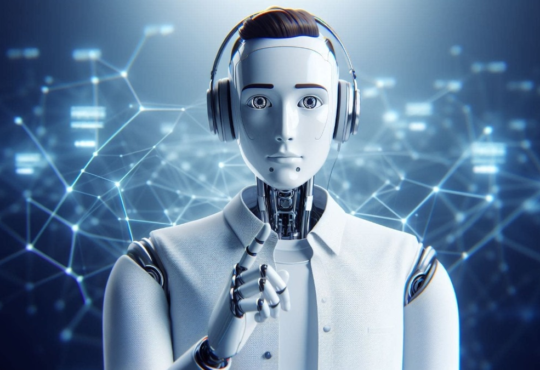
Technology today is evolving at a rapid pace, enabling faster change and progress, causing an acceleration of the rate of change. However, it is not only technology trends and emerging technologies that are evolving, a lot more has changed, making IT professionals realize that their role will not stay the same in the contactless world tomorrow. And an IT professional in 2024 will constantly be learning, unlearning, and relearning (out of necessity, if not desire).
What does this mean for you in the context of the highest paying jobs in India? It means staying current with emerging technologies and latest technology trends. And it means keeping your eyes on the future to know which skills you’ll need to know to secure a safe job tomorrow and even learn how to get there. Here are the top 24 emerging technology trends you should watch for and make an attempt at in 2024, and possibly secure one of the highest paying tech jobs that will be created by these new technology trends. Starting the list of new tech trends with the talk of the town, gen-AI!
Artificial intelligence can generate high-quality, creative content, including text, images, videos, and music. This technology uses algorithms like GPT (Generative Pre-trained Transformer) and DALL-E to understand and produce content that resonates with human preferences. The vast applications range from generating articles, creating educational materials, and developing marketing campaigns to composing music and producing realistic visuals. This speeds up content creation and reduces costs, and democratizes access to creative tools, enabling small businesses and individuals to create content at scale.
Quantum computers leverage the properties of quantum mechanics to process information exponentially faster than classical computers for specific tasks. This year, we're seeing quantum computing being applied in areas such as cryptography, where it can potentially crack currently considered secure codes, and in drug discovery, speeding up the process by accurately simulating molecular structures. The technology is still nascent but poised to revolutionize industries by solving complex problems intractable for traditional computers.
The fifth generation of mobile networks, 5G, promises significantly faster data download and upload speeds, wider coverage, and more stable connections. The expansion of 5G is facilitating transformative technologies like IoT, augmented reality, and autonomous vehicles by providing the high-speed, low-latency connections they require. This technology is crucial for enabling real-time communications and processing large amounts of data with minimal delay, thereby supporting a new wave of technological innovation.
Enhanced VR technologies are offering more immersive and realistic experiences. With improvements in display resolutions, motion tracking, and interactive elements, VR is becoming increasingly prevalent in gaming, training, and therapeutic contexts. New VR systems are also becoming more user-friendly, with lighter headsets and longer battery life, which could lead to broader consumer adoption and integration into daily life.
AR technology is transforming the retail industry by allowing consumers to visualize products in a real-world context through their devices. This trend is evident in applications that let users try on clothes virtually or see how furniture would look in their homes before purchasing. These interactive experiences enhance customer satisfaction, increase sales, and reduce return rates.
IoT technology in smart cities involves the integration of various sensors and devices that collect data to manage assets, resources, and services efficiently. This includes monitoring traffic and public transport to reduce congestion, using smart grids to optimize energy use, and implementing connected systems for public safety and emergency services. As cities continue to grow, IoT helps manage complexities and improve the living conditions of residents.
Advances in biotechnology are revolutionizing agriculture by enabling the development of crops with enhanced traits, such as increased resistance to pests and diseases, better nutritional profiles, and higher yields. Techniques like CRISPR gene editing are used to create crops that can withstand environmental stresses such as drought and salinity, which is crucial in adapting to climate change and securing food supply.
Autonomous vehicles use AI, sensors, and machine learning to navigate and operate without human intervention. While fully autonomous cars are still under development, there's significant progress in integrating levels of autonomy into public transportation and freight logistics, which could reduce accidents, improve traffic management, and decrease emissions.
Initially developed for Bitcoin, blockchain technology is finding new applications beyond cryptocurrency. Industries are adopting blockchain for its ability to provide transparency, enhance security, and reduce fraud. Uses include tracking the provenance of goods in supply chains, providing tamper-proof voting systems, and managing secure medical records.
Edge computing involves processing data near the source of data generation rather than relying on a central data center. This is particularly important for applications requiring real-time processing and decision-making without the latency that cloud computing can entail. Applications include autonomous vehicles, industrial IoT, and local data processing in remote locations.
Personalized medicine tailors medical treatment to individual characteristics of each patient. This approach uses genetic, environmental, and lifestyle factors to diagnose and treat diseases precisely. Advances in genomics and biotechnology have enabled doctors to select treatments that maximize effectiveness and minimize side effects. Personalized medicine is particularly transformative in oncology, where specific therapies can target genetic mutations in cancer cells, leading to better patient outcomes.
Neuromorphic computing involves designing computer chips that mimic the human brain's neural structures and processing methods. These chips process information in ways that are fundamentally different from traditional computers, leading to more efficient handling of tasks like pattern recognition and sensory data processing. This technology can produce substantial energy efficiency and computational power improvements, particularly in applications requiring real-time learning and adaptation.
Innovations in green energy technologies focus on enhancing the efficiency and reducing the costs of renewable energy sources such as solar, wind, and bioenergy. Advances include new photovoltaic cell designs, wind turbines operating at lower wind speeds, and biofuels from non-food biomass. These technologies are crucial for reducing the global carbon footprint and achieving sustainability goals.
Advanced wearable devices now continuously monitor various health metrics like heart rate, blood pressure, and even blood sugar levels. These devices connect to smartphones and use AI to analyze data, providing users with insights into their health and early warnings about potential health issues. This trend is driving a shift towards preventive healthcare and personalized health insights.
Extended reality (XR) encompasses virtual reality (VR), augmented reality (AR), and mixed reality (MR), providing immersive training experiences. Industries like healthcare, aviation, and manufacturing use XR for risk-free, hands-on training simulations replicating real-life scenarios. This technology improves learning outcomes, enhances engagement, and reduces training costs.
Voice-activated technology has become more sophisticated, with devices now able to understand and process natural human speech more accurately. This technology is widely used in smart speakers, home automation, and customer service bots. It enhances accessibility, convenience, and interaction with technology through hands-free commands and is increasingly integrated into vehicles and public spaces.
Commercial space travel is making significant strides with companies like SpaceX and Blue Origin. These developments aim to make space travel accessible for more than just astronauts. Current offerings range from short suborbital flights providing a few minutes of weightlessness to plans for orbital flights. Space tourism opens new avenues for adventure and pushes the envelope in aerospace technology and research.
Synthetic media refers to content that is entirely generated by AI, including deepfakes, virtual influencers, and automated video content. This technology raises critical ethical questions and offers extensive entertainment, education, and media production possibilities. It allows for creating increasingly indistinguishable content from that produced by humans.
Robotics technology has evolved to create machines that can perform complex tasks autonomously or with minimal human oversight. These robots are employed in various sectors, including manufacturing, where they perform precision tasks, healthcare as surgical assistants, and homes as personal aids. AI and machine learning advances are making robots even more capable and adaptable.
AI is critical in enhancing cybersecurity by automating complex processes for detecting and responding to threats. AI systems can analyze vast amounts of data for abnormal patterns, predict potential threats, and implement real-time defenses. This trend is crucial in addressing cyber attacks' increasing sophistication and frequency.
Digital twins are virtual replicas of physical devices for simulation, monitoring, and maintenance. They are extensively used in manufacturing, automotive, and urban planning to optimize operations and predict potential issues. Digital twins enable companies to test impacts and changes in a virtual space, reducing real-world testing costs and time.
This trend focuses on developing technology in an environmentally and socially responsible manner. It includes innovations in the lifecycle management of tech products, from design to disposal. The aim is to reduce electronic waste, improve energy efficiency, and use environmentally friendly materials.
Telemedicine allows patients to consult with doctors via digital platforms, reducing the need for physical visits. Providing continued medical care during situations like the COVID-19 pandemic has become vital. Telemedicine is expanding to include more services and is becoming a regular mode of healthcare delivery.
Nanotechnology involves manipulating matter at the atomic and molecular levels, enhancing or creating materials and devices with novel properties. Applications are vast, including more effective drug delivery systems, enhanced materials for better product performance, and innovations in electronics like smaller, more powerful chips.
Although technologies are emerging and evolving all around us, these 24 technology trends offer promising career potential now and for the foreseeable future. And most of these trending technologies are welcoming skilled professionals, meaning the time is right for you to choose one, get trained, and get on board at the early stages of these trending technologies, positioning you for success now and in the future.
Technology trends refer to the prevailing developments, innovations, and advancements in the world of technology. These trends often shape the direction of industries, businesses, and society as a whole, influencing how we interact, work, and live.
Following technology trends is crucial for individuals and businesses alike because it allows them to stay competitive and relevant in a rapidly evolving digital landscape. By keeping abreast of emerging technologies, one can make informed decisions about adopting new tools, improving processes, and leveraging opportunities for growth.
You can stay updated with technology trends by following reputable technology news sources, subscribing to industry newsletters, attending conferences and webinars, participating in online communities, and engaging in continuous learning and skill development.
The live sessions were quite good; you could ask questions and clear doubts. Also, the self-paced videos can be played conveniently, and any course part can be revisited. The hands-on projects were also perfect for practice; we could use the knowledge we acquired while doing the projects and apply it in real life.
I had an incredible learning experience with Simplilearn, and the course helped boost my career. My company promoted me from Cybersecurity Analyst Level -1 to Cybersecurity Analyst Level -2 with a 40% salary hike.
Upskilling and Reskilling in 2021: A Global Overview
Upskilling and Reskilling When Consolidating Roles
What is Blockchain Technology? How Does It Work?
State of Upskilling in 2021: Insights from Simplilearn’s Survey of Learners
Reskilling the Government Workforce for the Digital Age
Your One-Stop Guide ‘On How Does the Internet Work?’
© 2009 –2024– Simplilearn Americas Inc.
Follow us!
Company
Work with us
Discover
For Businesses
Learn On the Go!
Trending Post Graduate Programs
Trending Bootcamp Programs
Trending Master Programs
Trending Courses
Trending Categories
Trending Resources







